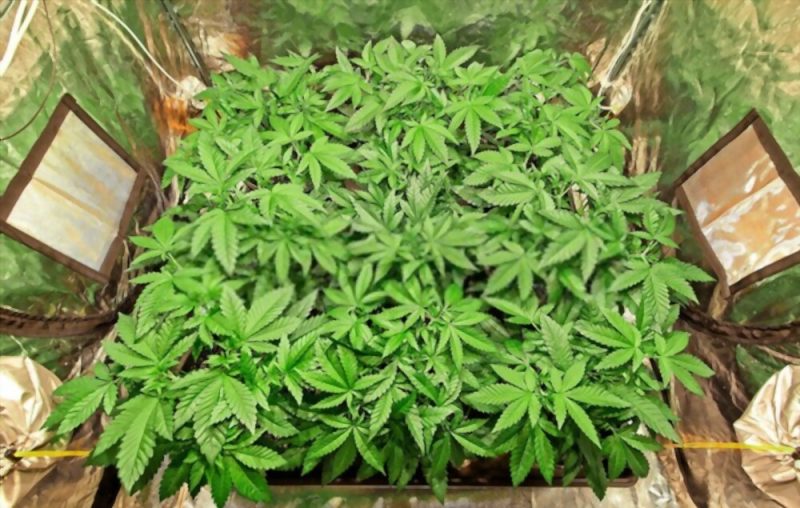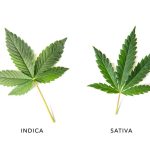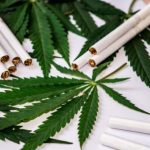🔥 Website for Sale - Contact Us
One of the most efficient and effective methods for maximizing yields in a limited space is the Sea of Green (SOG) method. By using the best grow tent setup and implementing the SOG method, you can achieve impressive harvests in a relatively short timeframe.
In this comprehensive guide, we explore the ins and outs of setting up the best grow tent for SOG and delve into the essential components required. From lighting and ventilation to plant arrangement and training techniques, we’ll cover everything you need to know to ensure a successful and bountiful SOG harvest.
I. The Basics of the SOG Method
A. What is the SOG method?
Definition and history
The Sea of Green, or SOG method is a popular indoor cannabis cultivation technique that focuses on growing a large number of smaller plants in a limited space, rather than cultivating a few larger plants. The term “Sea of Green” comes from the visual effect of the plants appearing like a green canopy, with little to no empty space between them. This technique was developed in the late 20th century by Dutch growers looking to maximize limited grow space.
The primary goal of the SOG method is to shorten the vegetative growth stage and speed up the overall cultivation process. By doing so, growers achieved faster and more frequent harvest cycles.
Benefits of the SOG method
There are several advantages to using the SOG method in your cannabis cultivation:
Space efficiency: The SOG method allows more plants in a smaller area, which is ideal for those looking to maximize their plant count in grow tent.
Faster harvests: By focusing on shorter vegetative growth and quicker transitions to the flowering stage, the SOG method can significantly reduce the overall time required for each harvest cycle.
Increased yields: The densely packed arrangement of plants in the SOG method can lead to higher yields per square foot compared to traditional growing methods.
Energy efficiency: With a smaller canopy to cover, the SOG method often requires less energy for lighting and temperature control, ultimately reducing the overall energy costs associated with growing cannabis.
B. The importance of grow tent setup for SOG
Space management
When it comes to successfully implementing the SOG method, proper grow tent setup is crucial. The primary objective of the SOG method is to maximize the available growing space and create an even, dense canopy of plants. As such, having a well-designed grow tent is essential for effective space management.
A well-organized grow tent ensures that your plants receive adequate light distribution, air circulation, and support. The right setup can also make it easier for you to access your plants for regular maintenance, such as pruning and training.
Yield optimization
Another key aspect of the grow tent setup for SOG is optimizing the conditions for maximum yield. By creating an environment that caters specifically to the needs of the SOG method, you can ensure that your plants thrive and produce optimal harvests.
This includes considerations such as the choice of grow lights, temperature, and humidity control, and effective ventilation systems.
II. Choosing the Right Grow Tent
A. Factors to consider when selecting a grow tent
Size
One of the most important factors to consider when choosing a grow tent for the SOG method is its size. To determine the ideal tent size, consider the number of plants and the available grow space. Remember that the SOG method focuses on growing a larger number of smaller plants, so it’s crucial to select a tent with enough space to accommodate this arrangement.
It’s also essential to consider the height of your grow tent. Although the SOG method typically involves shorter plants, you’ll still need ample vertical space for your lighting system, ventilation, and plant support structures. Ensure that the tent you choose has enough height to accommodate these factors without overcrowding your plants.
Durability and quality
The quality and durability of your grow tent play a significant role in the success of your indoor cannabis cultivation. High-quality grow tents are typically made from sturdy, tear-resistant materials and feature strong support structures to ensure they can withstand the weight of your equipment and plants.
Additionally, the best grow tents will have a light-proof, reflective interior lining to maximize light distribution and prevent light leakage. This is particularly important for the SOG method, as an even light distribution is crucial for maintaining a uniform plant canopy.
B. Top grow tent recommendations for SOG
To help you make an informed decision, we’ve compiled a shortlist of the best grow tents on the market. These tents have been chosen based on their size, quality, and overall suitability for the SOG technique.
Gorilla Grow Tent Shorty Series
Pros: The Gorilla Grow Tent Shorty Series offers a range of size options, making it easy to find the perfect fit for your growing space. These tents are constructed from high-quality, durable materials and feature a reflective interior lining to maximize light distribution. The Shorty Series is designed with lower ceiling heights in mind, making it an excellent choice for growers with limited vertical space.
Cons: The Gorilla Grow Tent Shorty Series can be more expensive than other grow tent options, but the investment may be worth it for the quality and durability you’ll receive.
Vivosun Mylar Hydroponic Grow Tent
Pros: The Vivosun Mylar Hydroponic Grow Tent is an affordable option that doesn’t skimp on quality. With a range of size options and a light-proof, reflective interior, this grow tent offers excellent value for money. The sturdy frame and easy assembly make it a reliable choice for both beginners and experienced growers.
Cons: Some users have reported minor light leaks with this grow tent, but these can often be easily fixed with some additional light-blocking materials or tape.
CoolGrows Indoor Mylar Hydroponics Grow Tent
Pros: The CoolGrows Indoor Mylar Hydroponics Grow Tent is another budget-friendly option that delivers in terms of quality and performance. This grow tent offers a variety of size options, a strong metal frame, and a light-proof, reflective interior. The easy-to-follow assembly instructions make it a user-friendly choice.
Cons: Some users have reported minor zipper issues with this grow tent, but these can often be resolved with proper care and maintenance.
Secret Jardin Dark Room Grow Tent
Pros: The Secret Jardin Dark Room Grow Tent is a premium option known for its exceptional light-proofing and overall quality. This grow tent features a highly reflective interior, a sturdy frame, and multiple size options. The thick canvas material ensures durability and long-lasting performance.
Cons: The Secret Jardin Dark Room Grow Tent can be more expensive than other options on this list, but the investment may be justified by the top-tier features and quality.
Ultimately, the best grow tent for the SOG method will depend on your specific needs, budget, and preferences.
III. Essential Grow Tent Components for SOG
A. Lighting
Types of grow lights
Choosing the right grow light for your SOG grow tent setup is crucial for achieving optimal plant growth and yields.
High-Intensity Discharge (HID) lights: These include Metal Halide (MH) and High-Pressure Sodium (HPS) lights. HID lights are known for their high light output and efficiency. MH lights are ideal for the vegetative stage, while HPS lights are better suited for the flowering stage.
Light Emitting Diode (LED) lights: LED grow lights have become increasingly popular due to their energy efficiency, long lifespan, and full spectrum light capability. They are suitable for both the vegetative and flowering stages, making them a versatile choice for SOG setups.
Compact Fluorescent Lights (CFLs): CFLs are an affordable and energy-efficient option, but they typically have a lower light output compared to HID and LED lights. They can work well for small-scale SOG setups or as supplementary lighting.
Ideal light intensity and spectrum for SOG
When it comes to SOG, providing the right light intensity and spectrum is essential for promoting healthy plant growth. For the vegetative stage, a cool blue light spectrum (around 4000-6000K) is ideal, as it encourages tight node spacing and bushy growth. During the flowering stage, a warmer red light spectrum (around 2000-3000K) is preferred, as it stimulates flower and resin production.
The light intensity should be high enough to ensure even light distribution across your entire canopy, without causing light stress or burning your plants. A good rule of thumb is to maintain a distance of 18-24 inches between plants and grow light.
To achieve the best results with your SOG grow tent setup, carefully consider the type of grow light you choose, and ensure it provides the appropriate intensity and spectrum for each stage of growth. In the next section, we will discuss the importance of proper ventilation and air circulation in your grow tent.
B. Ventilation and air circulation
Importance of proper airflow
Proper ventilation and air circulation are crucial components of any successful grow tent setup, especially when using the SOG method.
Good airflow in your grow tent helps to:
- Maintain optimal temperature and humidity levels
- Strengthen plant stems by simulating natural wind conditions
- Prevent the buildup of excess moisture, reducing the risk of mold and mildew
- Reduce the likelihood of pest infestations
- Ensure adequate carbon dioxide (CO2) exchange for healthy plant growth
- Fans and ventilation systems
To achieve proper ventilation and air circulation in your SOG grow tent, use a combination of intake and exhaust fans, as well as oscillating fans for air movement within the grow space. Here’s what you should consider:
Exhaust fan: An exhaust fan should be installed near the top of your grow tent to remove hot air and expel it outside the tent. The fan should be powerful enough to replace the air in grow tent multiple times per hour. Pair your exhaust fan with a carbon filter to help control odors and keep the air clean.
Intake fan: An intake fan should be placed near the bottom of your grow tent to draw fresh air into the grow space. It’s essential to choose an intake fan with a lower CFM (cubic feet per minute) rating than your exhaust fan to maintain negative pressure in the grow tent, which helps to prevent odor leaks and maintain optimal airflow.
Oscillating fans: Place one or more oscillating fans inside your grow tent to create air movement around your plants. These fans should be arranged to ensure that all plants receive adequate airflow without being directly blasted by the fan, as this can cause stress and damage to the plants.
By setting up an effective ventilation system and ensuring proper air circulation in your SOG grow tent, you can create a healthy environment that promotes optimal plant growth and minimizes the risk of common issues associated with indoor cannabis cultivation. In the next sections, we’ll discuss temperature and humidity control, as well as odor management in your grow tent.
C. Temperature and humidity control
Importance of optimal temperature and humidity
Maintaining the right temperature and humidity levels in your SOG grow tent is critical for ensuring healthy plant growth and maximizing yields. Fluctuations in temperature and humidity can cause plant stress and slow down growth, and even lead to nutrient lockout, pests, and diseases.
Optimal temperature and humidity levels can:
- Encourage robust growth during the vegetative stage
- Promote flower development and resin production during the flowering stage
- Help prevent the growth of mold, mildew, and other pathogens
- Ensure proper nutrient uptake and overall plant health
- Ideal temperature and humidity levels for SOG
For the SOG method, the following temperature and humidity ranges are recommended:
Vegetative stage: Aim for a temperature range of 70-85°F (21-29°C) and relative humidity (RH) of 40-70%. Higher humidity levels during the vegetative stage can encourage growth.
Flowering stage: During the flowering stage, maintain a temperature range of 65-80°F (18-26°C) and relative humidity (RH) of 40-50%. Lower humidity levels during this stage can help prevent mold and mildew growth on dense flower clusters.
Tools for temperature and humidity control
Hygrometer/thermometer: A digital hygrometer and thermometer combo will help you monitor the temperature and humidity levels in your grow tent.
Humidifier/dehumidifier: Depending on the grow tent humidity, use a humidifier or dehumidifier to maintain the desired humidity levels.
D. Odor control
Why odor control is important
As your cannabis plants mature, they will produce strong, distinctive odors that can become a concern for many indoor growers. Proper odor control is essential to maintaining a discreet grow operation, as well as ensuring a comfortable living environment in your home.
In addition to these practical considerations, managing odors is crucial for maintaining a clean and healthy grow space, as lingering odors can attract pests and contribute to mold and mildew growth.
Odor control methods for SOG grow tents
There are several effective methods for managing odors in your SOG grow tent, including:
Carbon filter: A carbon filter is one of the most popular and effective solutions for odor control in a grow tent. It uses activated carbon to absorb and neutralize odors before they can escape your grow tent. Pair your carbon filter with an exhaust fan to ensure that the air is continuously cleaned and circulated.
Ozone generator: Ozone generators work by producing ozone (O3) gas, which neutralizes odors by breaking down odor-causing molecules. While ozone generators can be highly effective at eliminating odors, they should be used with caution, as excessive ozone exposure can be harmful to both plants and humans.
Air purifiers: Some air purifiers are designed to remove odors and contaminants from the air using a combination of filters, such as HEPA and activated carbon filters. These units can be an effective addition to your odor control strategy but may not be as powerful as a dedicated carbon filter and exhaust fan setup.
Odor neutralizers: There are various odor-neutralizing products available on the market, such as gels, sprays, and air fresheners.
By implementing one or more of these odor control methods in your SOG grow tent, you can maintain a discreet and healthy growing environment while maximizing your cannabis plants’ growth and yield potential. With the right combination of grow tent components, setup, and maintenance, you’ll be well on your way to a successful SOG harvest.
IV. Perfecting Your SOG Grow Tent Layout
A. Arranging your plants for optimal growth
Importance of plant arrangement in SOG
In a SOG setup, plant arrangement plays a crucial role in ensuring that each plant receives adequate light, airflow, and space to grow. A well-organized plant layout can help create an even canopy, allowing for better light penetration and distribution.
Key considerations for plant arrangement
When arranging your plants for optimal growth in a SOG grow tent, consider the following factors:
Plant spacing: The SOG method typically involves placing plants close together to maximize the number of plants per square foot. Aim for a plant spacing of about 1-2 feet (30-60 cm) apart, depending on the size of your containers and the strain you’re growing. Close spacing encourages upward growth and creates a dense canopy, but be cautious not to overcrowd your plants, as this can lead to poor airflow and an increased risk of mold and mildew.
Canopy management: Prune and train your plants regularly to maintain an even canopy and ensure that light reaches all parts of the plants. Techniques like topping, low-stress training (LST), and defoliation can be used to shape your plants and create a more uniform canopy.
Container size: Select appropriately sized containers for your plants, keeping in mind that smaller containers are generally preferred in SOG setups to encourage faster growth and prevent plants from becoming root-bound. Consider using fabric pots or air pots, as these can help promote healthy root growth and prevent overwatering.
Accessibility: Arrange your plants in a way that allows for easy access to each plant for regular maintenance, such as watering, pruning, and pest control. This may involve placing your plants on rolling trays or using a tiered shelving system to optimize your grow space.
By carefully considering your plant arrangement and maintaining an even, well-spaced canopy, you can ensure that your cannabis plants receive the optimal growing conditions they need to thrive and produce a bountiful harvest using the SOG method.
B. Training and pruning techniques for SOG
The Role of Training and Pruning in SOG
In a Sea of Green setup, training and pruning are essential techniques for maintaining an even canopy and maximizing light penetration to all plants. By encouraging upward growth and preventing the development of unnecessary foliage, you can optimize your plant’s energy usage and improve your overall yield.
Training techniques for SOG
There are several training techniques that can be applied to your SOG grow tent, including:
Low-Stress Training (LST): LST involves gently bending and tying down the main stems of your plants to create a more horizontal growth pattern. This technique exposes more of the plant’s lower branches to light, promoting an even canopy and increased bud production. LST is ideal for SOG setups, as it encourages upward growth without causing significant stress to the plants.
Topping: Topping is a technique where the main stem’s growing tip is removed, encouraging the plant to grow multiple main branches instead of a single central stem. While topping can be beneficial in some grow setups, it is generally not recommended for SOG, as it can lead to an uneven canopy and reduced light penetration.
Pruning techniques for SOG
Pruning is another essential practice in SOG grow tents. Regular pruning can help maintain an even canopy and redirect your plant’s energy toward bud production. Some effective pruning techniques include:
Defoliation: Defoliation involves the selective removal of fan leaves, particularly those blocking light from reaching lower bud sites or obstructing airflow. By removing unnecessary foliage, you can ensure that your plants receive adequate light and maintain healthy airflow throughout the canopy. Be cautious not to remove too many leaves at once, as this can stress your plants and affect their growth.
Lollipop pruning: Lollipop pruning involves removing lower growth and small branches from your plants, focusing on the bottom third of the plant. This technique helps redirect your plants’ energy towards the main colas and reduces the risk of mold and mildew growth due to poor airflow and light penetration in the lower canopy.
By incorporating these training and pruning techniques into your SOG grow tent maintenance routine, you can create an even, healthy canopy that maximizes light penetration, airflow, and overall plant productivity. With proper care and attention, your SOG grow tent setup can yield impressive results in a relatively short timeframe.
C. Managing the grow cycle
Importance of grow cycle management in SOG
In a Sea of Green setup, effectively managing the grow cycles is crucial to maximizing plant growth. Timely transitioning between the vegetative and flowering stages can have a significant impact on the success of your SOG grow.
Vegetative stage management
In a SOG grow tent, the vegetative stage is typically shorter than in other grow methods. Here are some key points to consider during this stage:
Duration: The vegetative stage in SOG usually lasts between 2 to 4 weeks, depending on the strain and the desired size of your plants. Shortening the vegetative stage encourages faster flowering, which can be beneficial for quicker harvests and higher turnover.
Lighting: During the vegetative stage, provide your plants with 18-24 hours of light per day to promote robust growth.
Transitioning to the flowering stage
Timing the transition to the flowering stage is critical in a SOG grow tent. To initiate the flowering stage:
Change the light cycle: Switch your grow lights to 12 hours on/12 hours off schedule. This change in the light cycle signals the plants to start producing flowers.
Monitor for signs of flowering: Watch for signs that your plants have entered the flowering stage, such as the appearance of pre-flowers or the stretching of plant stems. Adjust your training and pruning techniques as needed to maintain an even canopy during this stage.
Flowering stage management
During the flowering stage, focus on optimizing the conditions in your grow tent to maximize bud production and overall yield:
Lighting: Ensure that your grow lights provide adequate light intensity and penetration throughout the canopy. Adjust the height and angle of your lights as necessary to maintain optimal coverage.
Pruning and training: Continue with defoliation and lollipop pruning as needed to keep the canopy even and maintain proper airflow. Avoid any high-stress training techniques during this stage, as they can negatively affect bud production.
Harvest timing: Monitor your plants closely for signs of maturity, such as the changing color of the pistils and the appearance of cloudy trichomes. Harvest your plants when they reach peak maturity to maximize yield and potency.
V. Conclusion: Achieving Success with Your SOG Grow Tent Setup
Growing cannabis indoors using the Sea of Green (SOG) method can be a highly effective way to maximize yields and shorten the time to harvest. By implementing the right grow tent setup, selecting suitable strains, and applying optimal training and pruning techniques, you can create a thriving environment for your cannabis plants to flourish.
In this guide, we’ve covered the essential components of a SOG grow tent, including lighting, ventilation, temperature and humidity control, and odor management. We’ve also discussed the importance of arranging your plants for optimal growth, as well as various training, pruning, and grow cycle management techniques.





